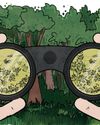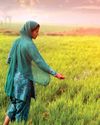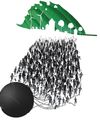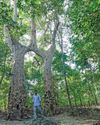
After four years, when the intergovernmental body IPBES released the summary of its much-awaited "Assessment Report on the Sustainable Use of Wild Species" on July 8, many knew that it would provoke animal rights groups.
Adopted at the ninth plenary session of IPBES or the Intergovernmental Science-Policy Platform on Biodiversity and Ecosystem Services in Bonn, Germany, the summary has been prepared by nearly 300 social and natural scientists from across the world who examined 6,200 scientific studies and repositories of indigenous knowledge. It is the most detailed scientific summary, to date, on the benefits of wild species and lists pathways for using them sustainably.
Suggesting greater integration of species conservation and food security, the summary states that billions of people worldwide rely on some 50,000 wild species for food, energy, medicine and income. Roughly, 33,000 of the species are plants and fungi; 7,500 are fish and aquatic invertebrates; and 9,000 are amphibians, insects, reptiles, birds and mammals. Of these, more than 10,000 species are used directly for human food. Sustainable use of the wild species is, therefore, fundamental to maintaining biodiversity and ecosystem functions in the long term, while achieving food security and improving nutrition across the globe. About 70 per cent of the world's poor directly depend on wild species for survival. In many cases, wild species are symbols of cultural identities.
The report states that sustainable use of wild species would bolster the UN's Sustainable Development Goals (SDGs). It can help achieve 80 per cent of the SDG1 and SDG2 goals each that aim at eradicating poverty and hunger. This is apart from contributing to the achievement of 15 other SDGS that include ensuring good health and well-being; reducing inequality; providing access to affordable clean energy; and promoting economic growth.
この記事は Down To Earth の August 01, 2022 版に掲載されています。
7 日間の Magzter GOLD 無料トライアルを開始して、何千もの厳選されたプレミアム ストーリー、9,000 以上の雑誌や新聞にアクセスしてください。
すでに購読者です ? サインイン
この記事は Down To Earth の August 01, 2022 版に掲載されています。
7 日間の Magzter GOLD 無料トライアルを開始して、何千もの厳選されたプレミアム ストーリー、9,000 以上の雑誌や新聞にアクセスしてください。
すでに購読者です? サインイン

On shaky ground
Despite reporting net gains in green cover, the latest forest survey shows degradation of natural forests, particularly in ecologically sensitive hotspots

Burden of proof
The government's drive for e-KYC verification to ensure rightful targeting of beneficiaries has proved exclusionary for many

Rupee slide impacts agricultural trade
THE UNION Cabinet on January 1, 2025, approved the extension of a subsidy package of ₹3,500 per tonne on di-ammonium phosphate (DAP) for companies.

THE 500 GW SWITCH OVER
Coal is the king of energy at present. India needs to dislodge it with clean energy for an equitable green transition

MANIFESTING 500 GW
Ensure that renewable energy is available round the clock.Establish a viable market and reward those who take lead

Lifting a curse
How Gangabai Rajput helped her water-scarce village in Madhya Pradesh let go of superstition and revive an ancient waterbody

HOLD THEM SACRED
The Supreme Court has recommended that the Union government create a comprehensive policy for the governance and management of sacred groves across the country

REPORT CARD 2024
Coal is still the king in terms of electricity generation. But new renewables, mainly solar power, have shown an impressive growth

'India a laboratory for seismologists'
India is no stranger to earthquakes. In recent memory, Latur and Bhuj districts in Maharashtra and Gujarat witnessed devastating tremors in 2003 and 2001 respectively. Such quakes leave clues that can aid preparations for future events, say seismologists KUSALA RAJENDRAN, professor, Indian Institute of Science, and CP RAJENDRAN, adjunct professor, National Institute of Advanced Studies. The Rumbling Earth-The Story of Indian Earthquakes, captures their work on historical as well as recent quakes. In an interview with ROHINI KRISHNAMURTHY, they discuss the science of earthquakes, why the Himalayas are due for a huge event and why prediction remains a challenge. Excerpts:

Capturing Siang
As India pushes for a mega-dam on the Siang river to counter China's upstream projects, the Adi tribal community of Arunachal Pradesh fears losing ancestral land